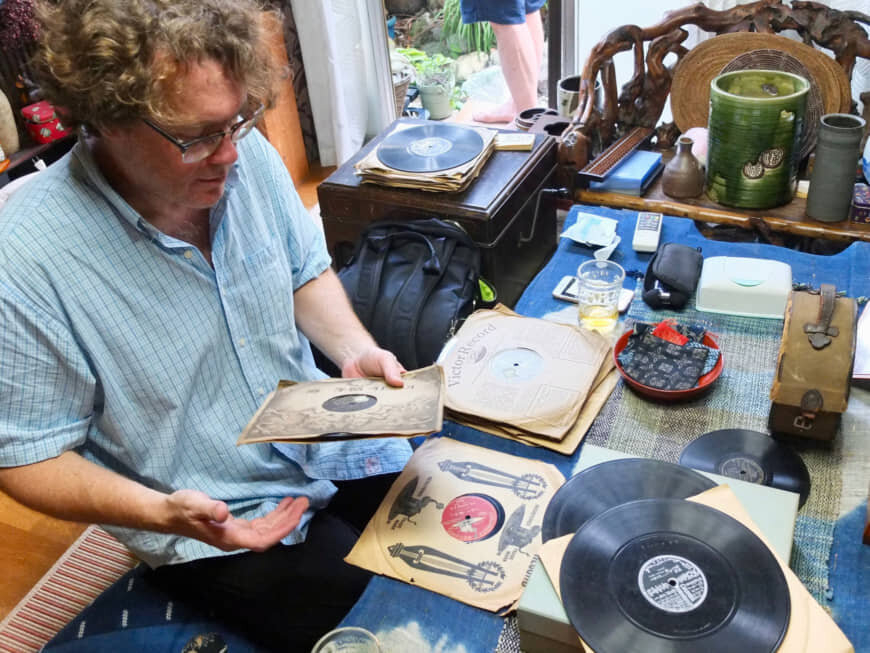Sound Storing Machines: Rob Millis on The First 78rpm Records from Japan, 1903-1912.
A sound artist, Fulbright scholar, and Guggenheim fellow with a deep interest in the early days of recording (78rpm shellac records, Edison cylinders, talking machines, gramophones, Victrolas and so on) Robert Millis has authored or co-authored books (Indian Talking Machine for Sublime Frequencies and Victrola Favorites for Dust-to-Digital) produced compilations and documentaries (including Paris to Calcutta: Men and Music on the Desert Road and This World is Unreal Like A Snake in a Rope for Sublime Frequencies), composed for radio (“The Gramophone Effect” for Documenta14) and film (the cult horror film Session 9 for USA films). He has released numerous recordings as a solo artist, as Climax Golden Twins, as Telescoping or as Idol Ko Si.
In 2019 he was a fellow of the Japan-US Friendship Commission and spent 5 months travelling in Japan working with Japanese sound artists, musicians and record collectors and produced the compilation Sound Storing Machines: The First 78rpm Records from Japan, 1903-1912.
The first commercial recordings from Asia were made in Japan in 1903 by Fred Gaisberg, the legendary producer and recording engineer who traveled the world making recordings for the Gramophone Company (later His Masters Voice). The recording industry barely existed at this time. Man’s ability to record and reproduce sound had only existed since 1877 (with the invention of Edison’s cylinder phonograph) and flat disc records, what we all collect and obsess over today, had only come into being in the late 1890s.
Sound Bath Museum in Nagasaki
Photo: Millis
It is a miracle what these fragile discs have survived: wars with Russia and China, the fire bombings (and worse) of World War II, modernization, the onslaught of Western media. They document, through a dreamlike haze of surface noise, a Japan that had just barely begun to open its doors to the rest of the world.
Including gagaku, shakuhachi, shamisen, storytelling, folksong and more these recordings are a unique glimpse into an ancient culture and an important document of the beginnings of the recording industry. Simple and complex. Alien and familiar. Featuring important artists and those who only appeared to sing before the strange Western recording horn and then vanished.
Sound Storing Machines spans only 9 years of recording—-from 1903 and the first commercial recordings made by Fred Gaisberg to 1912, the beginning of Japan’s homegrown record industry, including a few sides taken from Japan’s notorious bootleg 78rpm industry.
Okada Collection: Japan
Collected on various trips to Japan and compiled by sound artist Robert Millis (Indian Talking Machine, Victrola Favorites, Climax Golden Twins, Phi Ta Khon: Ghosts of Isan, This World is Unreal Like a Snake in a Rope, etc).
This is part three in a series (all produced by Millis) of early recording from Asia—including Sublime Frequencies’ The Crying Princess: 78rpm Records from Burma and Scattered Melodies: Korean Kayagum Sanjo











